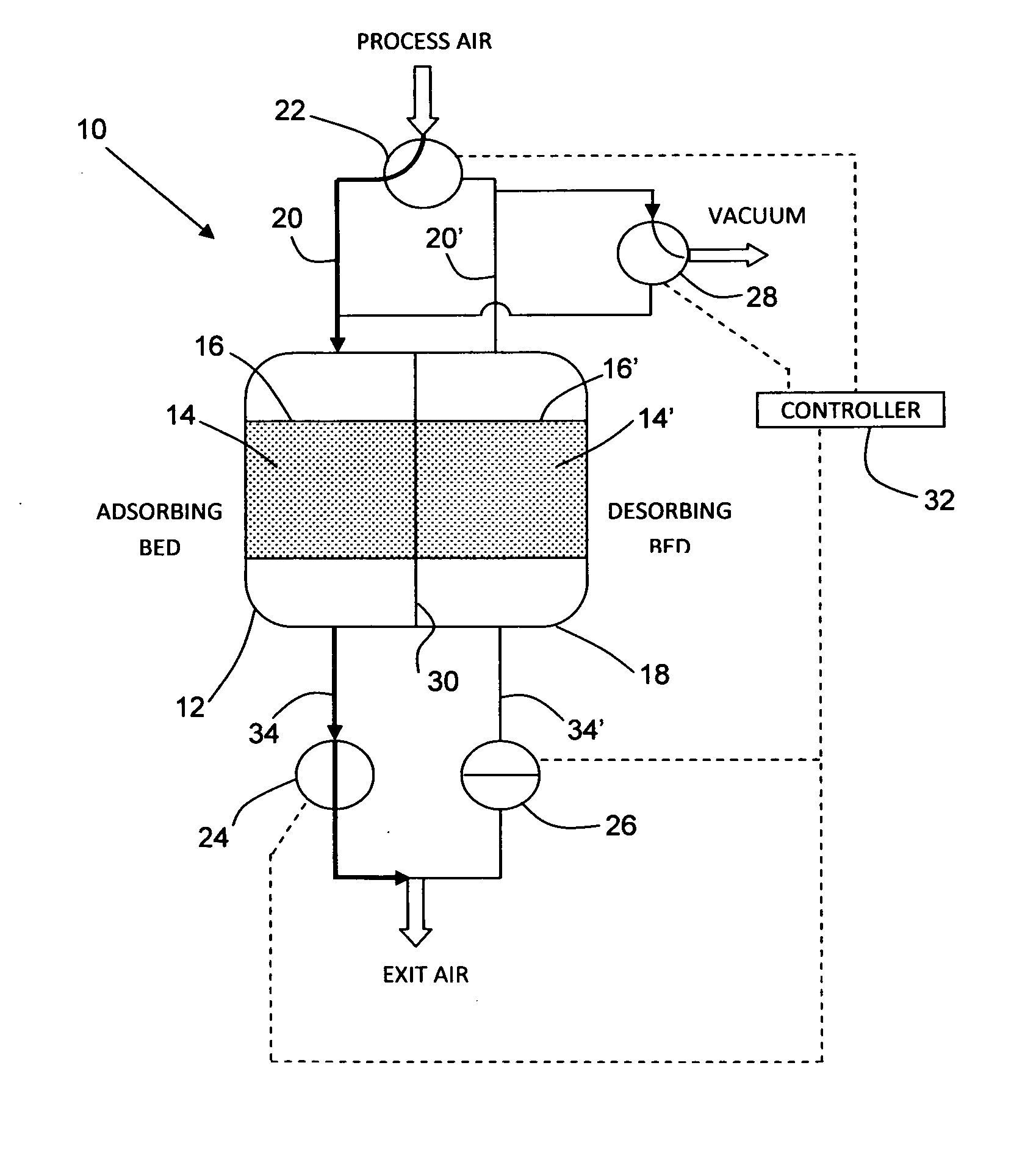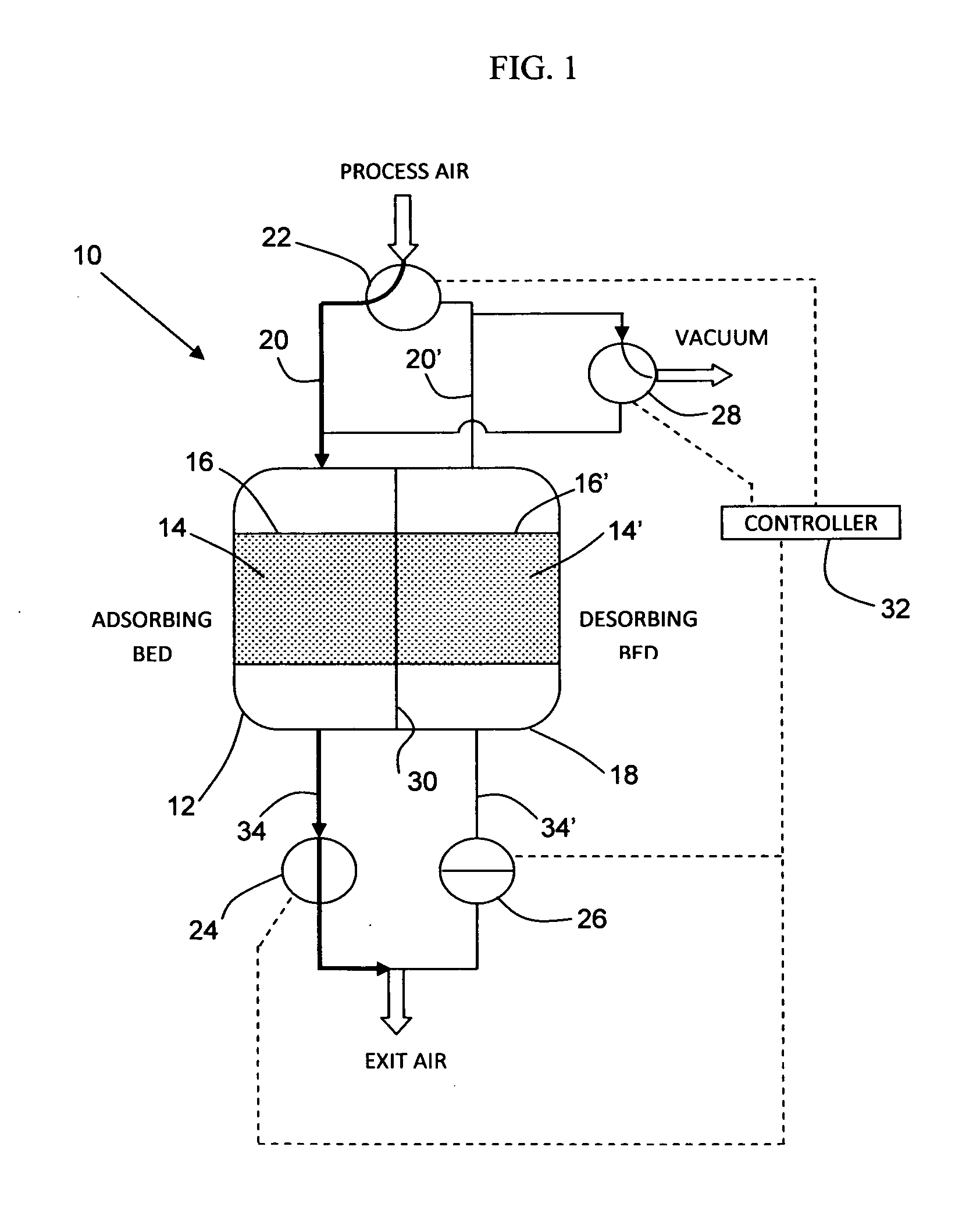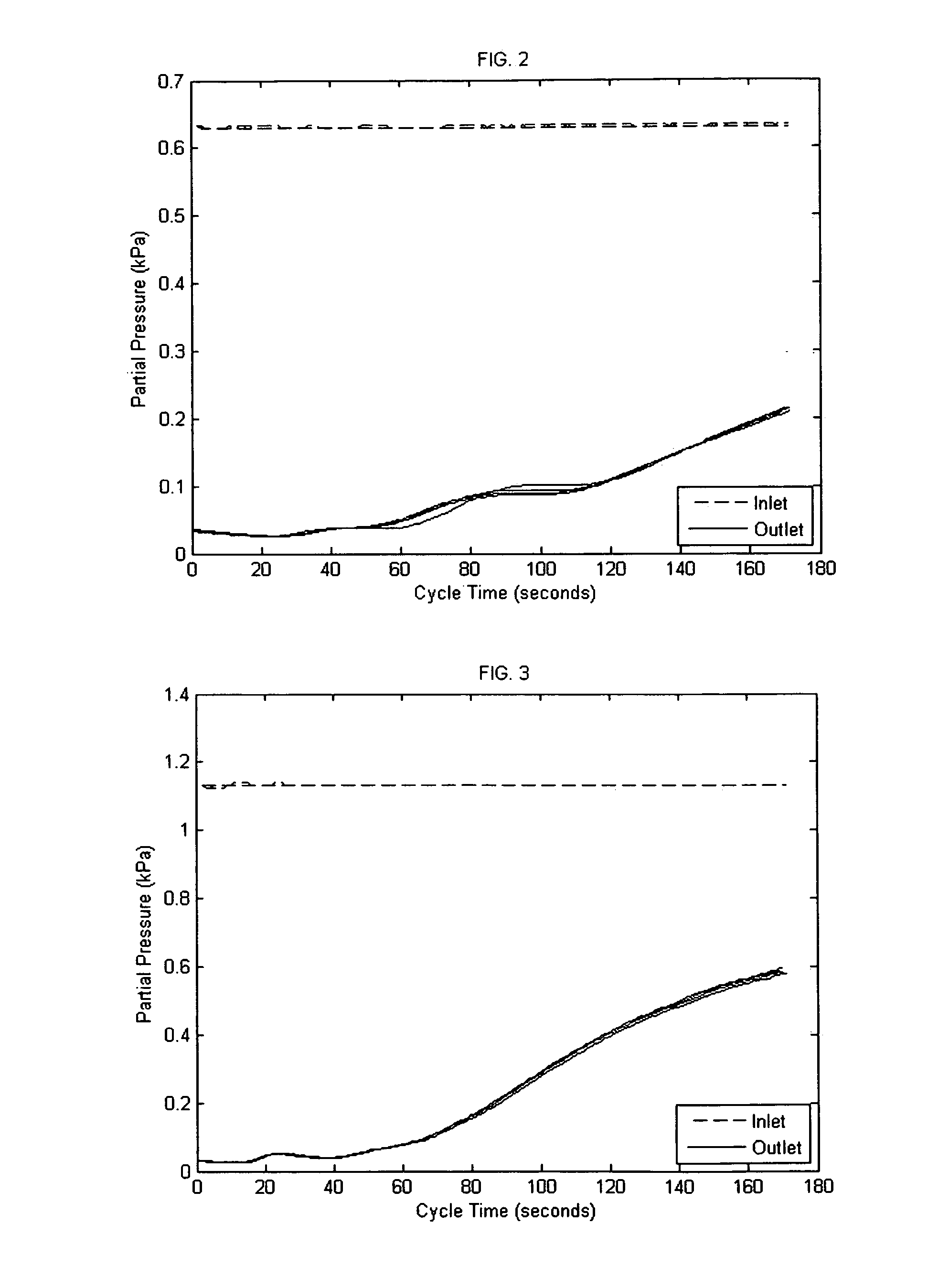Adsorption-desorption apparatus and process
a technology of adsorption and desorption, applied in the direction of chemistry apparatus and processes, separation processes, dispersed particle separation, etc., can solve the problems of inefficiency of thermal cycling of one bed of sorbent material between adsorption and desorption cycles, cost and time consumption, etc., to achieve the effect of reducing the cost of method and time consumption
- Summary
- Abstract
- Description
- Claims
- Application Information
AI Technical Summary
Benefits of technology
Problems solved by technology
Method used
Image
Examples
example 1
[0072]An adsorption-desorption apparatus according to the invention was constructed along the lines of FIG. 1. In this instance, the apparatus consisted of an aluminum housing into which were arranged 4 rectangular aluminum chambers, which for notation purposes were labeled chambers “A”, “B”, “C”, and “D”. The chambers were placed side-by-side with parallel flow paths, such that each chamber shared at least one common wall with an adjacent chamber. Each chamber was filled with an aluminum reticulated foam (ERG Materials and Aerospace Corporation), the foam being brazed onto the walls of each chamber for maximum heat transfer between the chambers. The reticulated aluminum foam had 40 pores per inch length (16 pores per cm length). Following assembly, the aluminum reticulated foam in each chamber was washcoated with a sorbent, specifically, zeolite 13X, and then dried. The zeolite sorbent loading was 1.4 g / in3 (85 mg / cm3), based on the free-standing aluminum foam exclusive of the hous...
example 2
[0076]Example 1 was repeated with the following process conditions: inlet air flow rate was 10 slpm and the inlet water partial pressure was 1.133 kPa. A graph of water partial pressures in the inlet and outlet flowstreams versus time is shown for four overlaid half-cycles in FIG. 3. After operation for more than 40 half cycles, when reproducible cycles were observed, calculations over four half-cycles gave a result of 77.3 percent removal of water.
example 3
[0077]Example 1 was repeated with the following process conditions: inlet air flow rate was 10 slpm and the inlet water partial pressure was 1.630 kPa. A graph of water partial pressures in the inlet and outlet flowstreams versus time is shown for four overlaid half-cycles in FIG. 4. After operation for more than 40 half cycles, when reproducible cycles were observed, calculations over four half-cycles gave a result of 70.8 percent removal of water.
PUM
| Property | Measurement | Unit |
|---|---|---|
| total pressure | aaaaa | aaaaa |
| partial pressure | aaaaa | aaaaa |
| temperature | aaaaa | aaaaa |
Abstract
Description
Claims
Application Information
 Login to View More
Login to View More - R&D
- Intellectual Property
- Life Sciences
- Materials
- Tech Scout
- Unparalleled Data Quality
- Higher Quality Content
- 60% Fewer Hallucinations
Browse by: Latest US Patents, China's latest patents, Technical Efficacy Thesaurus, Application Domain, Technology Topic, Popular Technical Reports.
© 2025 PatSnap. All rights reserved.Legal|Privacy policy|Modern Slavery Act Transparency Statement|Sitemap|About US| Contact US: help@patsnap.com



